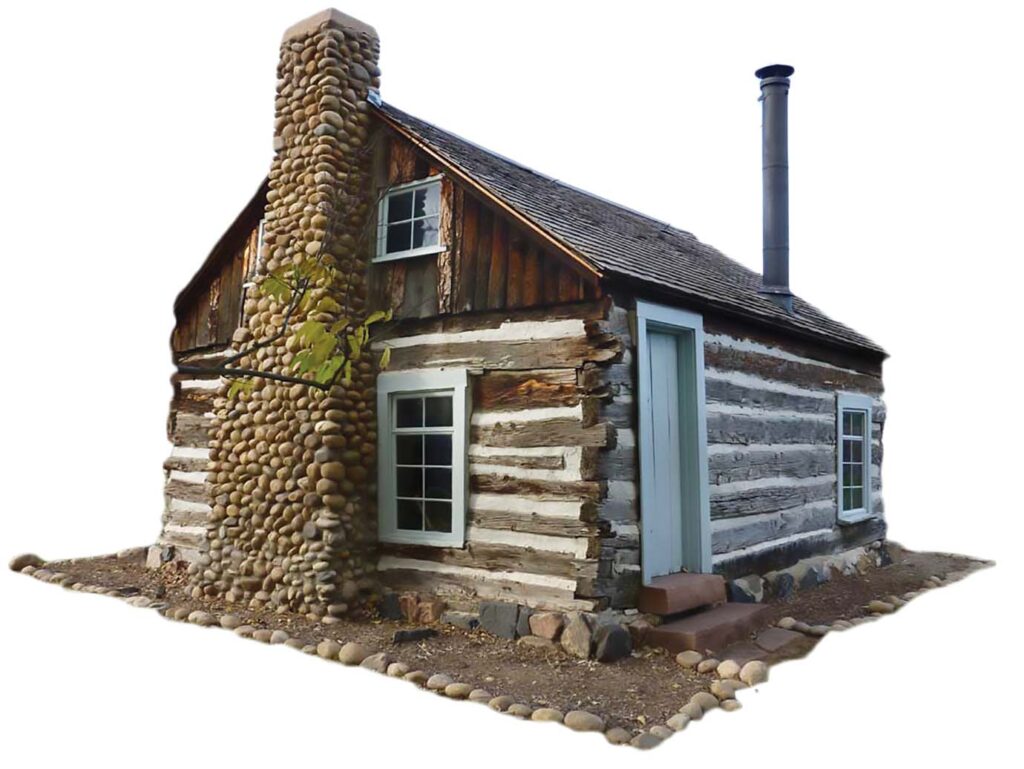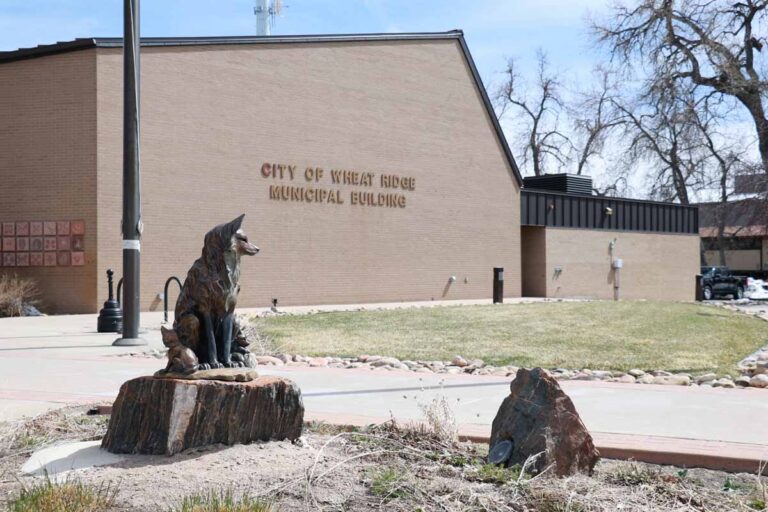The Grand Opening of the re-staged Johnson Cabin in Wheat Ridge’s Historical Park was a huge success at the Second Saturday May Festival. Visitors got the first glimpse into a building with an unusual and interesting history. It’s staged to provide a peek into the daily existence of a family newly arrived from the East – how they lived and what they ate. It closely parallels the cabin’s first years, but not its entire history.
Built in 1859 on the first registered homestead in the State of Colorado, the cabin was originally located at about 48th and Upham on the Stevens Farm. It was then moved to the Wolf Farm and later moved to Wadsworth and 48th beside Clear Creek by Judge Samuel Johnson. The cabin moved to its current home at the Historic Park in 1985, according to the Wheat Ridge 50th Anniversary website, though different sources have slightly different histories.
Henry Stevens built the structure on his farm the same year the Colorado Gold Rush started. Sometime later it was moved to the Wolf Farm. Records aren’t clear, but around 1874 a 35-year-old Irish immigrant named Jerry Coulehan purchased a 160-acre tract from Stevens on 44th Avenue. (then known as Jefferson Avenue), including the cabin, and developed the land into a very successful farm.
Samuel Johnson entered the picture in 1882 when, at the age of 9, his parents rented some land to farm from Coulehan. They lived in the one-room cabin, at first sharing it with the Charles Wilbur family. The little cabin must have made quite an impression on young Johnson because later, after he had achieved success as a lawyer, he purchased the cabin and had it moved to the small piece of land he owned along Clear Creek now known as Johnson Park.
Johnson established it as a museum and chocked it full of artifacts he had collected. Unfortunately, prior to the move to Johnson’s land, the logs were not properly numbered during disassembly, so when movers tried to reconstruct the building, the logs didn’t quite fit. These mismatches can still be seen at the base of the building. Johnson enjoyed his personal museum for several years, continued to collect artifacts, and used it as a retreat for himself and his important friends as his career blossomed. Turning from law to politics, he was elected District Attorney for six years and later served as judge of the district court of the First Judicial District of Colorado for 24 years. He died in 1964, a dedicated public servant and contributor to much of Wheat Ridge’s history.
Unfortunately, his cabin gradually fell into disrepair after Johnson’s death. The new (as of 1969) City of Wheat Ridge finally bought the structure and moved it to the recently designated Historical Park in 1985, where it now stands as evidence of the town’s early years. In its place as the beginning of the Historical Society’s Century-long Story, it has come full circle and, once again, appears a simple prairie homestead.






